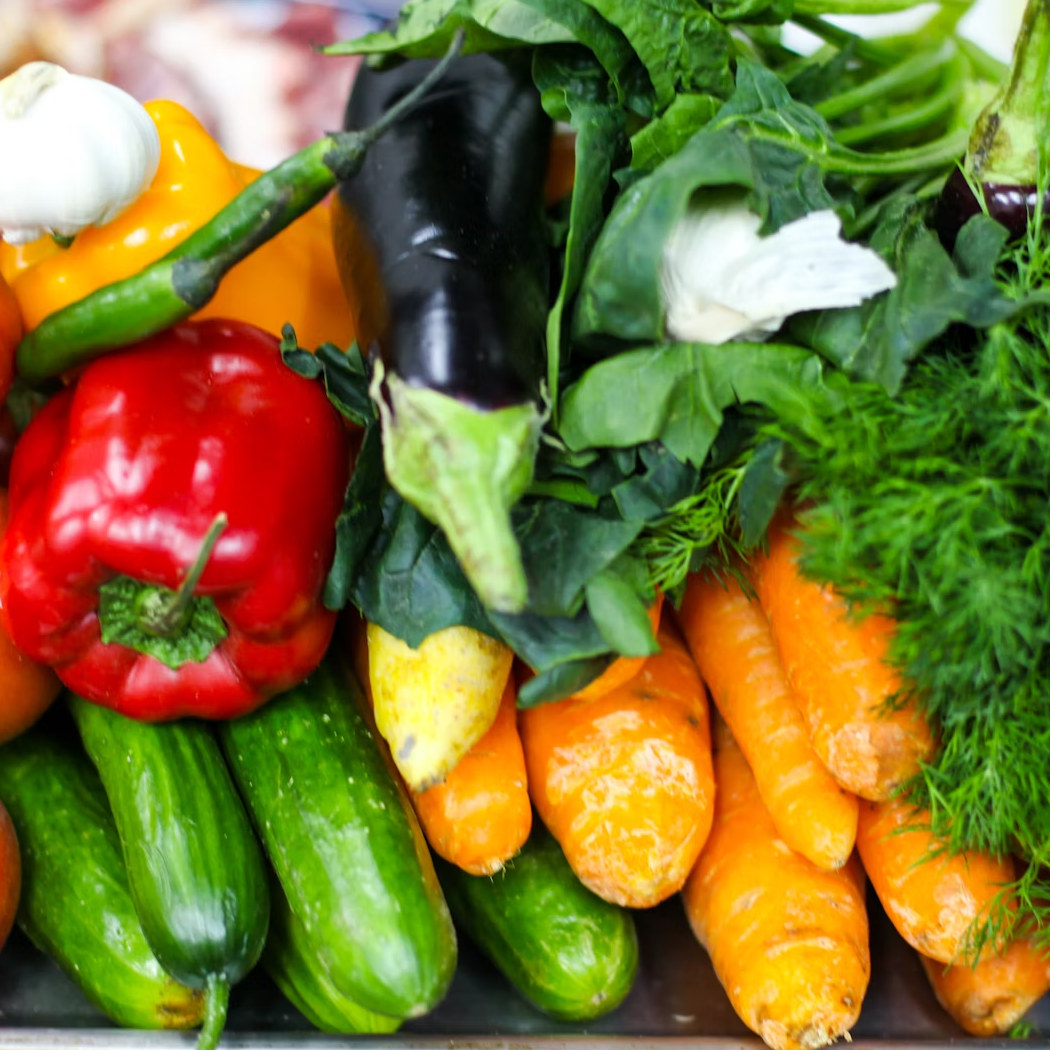
Author: Kiah Paetz
Photo by Daria Shevtsova
If you’re a woman, chances are you’ve felt some form premenstrual syndrome (also known as PMS) at some stage in your life. Around 90% of women experience this!
What you experience might be very different from your friends or family member. Some people have tender breasts, weight gain anxiety or depression, other experience abdominal pain, cramping, bloating and major food cravings!
If you search the internet, you can find thousands of remedies to help with PMS, but have you ever thought to look into your diet to find the answer? Emerging research suggests that diet may have a role in preventing and reducing some of the symptoms found with PMS.
But back to basics, let’s first explain the menstrual cycle
A normal menstrual cycle lasts on average 28 days. It is complex and controlled by many different glands and hormones, and not everyone experiences a 28 day cycle. The menstrual cycle includes four phases:
- Menstruation: The elimination of the thickened lining of the uterus (the endometrium) from the body.
- The Follicular Phase: The first day of menstruation ends with ovulation and is prompted by the release of the Follicle Stimulating Hormone (FSH) from the pituitary gland. During this phase, the developing follicle causes a rise in the oestrogen hormone.
- Ovulation: The release of the mature egg from the surface of the ovary, around two weeks before menstruation starts. Ovulation is triggered by high levels of luteinising hormone.
- The Luteal Phase: During this phase, the egg bursts from the follicle and there is a rising amount of progesterone along with small amounts of oestrogen. If pregnancy does not occur, there is a drop in progesterone and the lining of the uterus falls away.
Why does PMS occur?
The causes of PMS is still unclear. It is thought that it may be due to several physiological and psychological factors including monthly hormonal function and the effect that they have on neurotransmitters (the body’s chemical messenger system)
Can a plant-based diet help?
Emerging research is starting to show that plant-based diets may have a benefit in PMS. One study of 33 women found that following a low-fat plant-based diet was linked with reduced menstrual cramps and reduced PMS symptoms.1
Other studies comparing plant-based diets to western diets have found that women eating the plant-based diet excreted more estrogen and had lower plasma estrogen levels, which may be a factor in reducing PMS symtpoms.2
Focus on unrefined, complex grains
Unrefined grains include foods such as brown rice, wholegrain pasta, quinoa and wholegrain brown bread. In comparison to white varieties, these foods are often higher in fibre and micronutrients such as vitamin B. One study in Japan showed that eating high amounts of dietary fibre has an inverse relationship to menstrual pain, meaning that the more fibre consumed, the less pain the person experienced.3
How to eat more wholegrains:
- Swap white bread to wholegrain bread
- Swap white rice to brown rice or quinoa
- Swap white pasta to wholegrain or chickpea/lentil pasta
Limit salt
Salt, also known as sodium, is often found in high amounts in bacon, ham, biscuits, sweets, sausages, and processed foods. Not only does salt contribute to water retention, but it is thought that high amounts of salt decreases magnesium levels and can worsen PMS symptoms.4
Tips to reduce salt:
- Choose no-added salt canned foods.
- Don’t add salt to food.
- Use fresh herbs, spices, garlic and ginger instead of pre-made sauces.
- Opt for fresh produce over pre-packaged foods.
Non-haem iron
Iron has many important roles in the body. One of its roles is to helps synthesise serotonin (the happy hormone) from tryptophan. One study comparing types of iron found in food and PMS symptoms, found that a higher intake of non-haem iron was associated with lower risk of PMS. Iron is also essential during menstruation as a lot of iron is lost each month, which overtime can lead to deficiency.5
Non-haem iron is rich in:
- Spinach
- Nuts and seeds
- Legumes such as chickpeas and beans
- Tofu
Vitamin B-6
Vitamin B6 helps to synthesis the amino acids (protein building blocks) of tryptophan and tyrosine. These important amino acids are the precursors of serotonin and dopamine, our mood hormones. It is thought that low levels of vitamin B6 may cause high levels of the prolactin hormone, producing oedema and some psychological symptoms associated with PMS.6,7.8
Vitamin B6 is found in:
- Potatoes
- Bulgur
- Rice
- Nuts
- Spinach
Fruit
Fruit is rich in antioxidants, fibre and bioactive phytochemicals. It is well known to have many disease fighting properties as well as providing a fantastic boost of energy. One study of university students found that eating fruit had a protective effect against PMS and was linked with reduced occurrence and severity of PMS.9 It is thought this may be due to the strong antioxidants found in fruits which may help to protect against increased oxidative stress in the body during PMS.
How to get more fruit into the diet:
- Have a smoothie with your lunch
- Add fruit to cereal
- Have a piece of fruit as a snack
The bottom line
Eating more plant-based foods such as wholegrains, legumes fruits and vegetables significantly increases the number of beneficial phytonutrients, antioxidants and bioactive compounds in the diet. These compounds are strongly linked with health benefits from reducing risk of chronic disease such as heart disease and cancer. If suffering from significant PMS symptoms, it may be beneficial to incorporate more plant-based foods in your diet, due to the variety of strong health benefits they provide.
References
- Gorbach, S. L., & Goldin, B. R. (1987). Diet and the excretion and enterohepatic cycling of estrogens. Preventive Medicine, 16(4), 525–531. doi:10.1016/0091-7435(87)90067-3
- Barnard, N. (2000). Diet and sex-hormone binding globulin, dysmenorrhea, and premenstrual symptoms. Obstetrics & Gynecology, 95(2), 245–250. doi:10.1016/s0029-7844(99)00525-6
- Nagata, C., Hirokawa, K., Shimizu, N. and Shimizu, H.(2004). Associations of menstrual pain with intakes of soy, fat and dietary fiber in Japanese women. European Journal of Clinical Nutrition, 59(1), pp.88-92.
- Johnson, S., 2001. The multifaceted and widespread pathology of magnesium deficiency. Medical Hypotheses, 56(2), pp.163-170.
- Chocano-Bedoya PO, Manson JE, Hankinson SE. (2013), Intake of selected minerals and risk of premenstrual syndrome. American Journal of Epidemiolgy 177(10)m pp.1118-1127.
- Wyatt KM, Dimmock PW, Jones PW, Shaughn O'Brien PM.(1999). Efficacy of vitamin B-6 in the treatment of premenstrual syndrome: systematic review. British Medical Journal, 318(7195):1375-1381.
- Kashanian M, Mazinani R, Jalalmanesh S. (20070. Pyridoxine (vitamin B6) therapy for premenstrual syndrome. International Journal of Gynecology & Obestetrics, 96(1):43-44.
- Bendich A. (2000). The potential for dietary supplements to reduce premenstrual syndrome (PMS) symptoms. Journal of the American College of Nutrition. 19(1):3-12.
- Hashim, M., Obaideen, A., Jahrami, H., Radwan, H., Hamad, H., Owais, A., Alardah, L., Qiblawi, S., Al-Yateem, N. and Faris, “., 2019. Premenstrual Syndrome Is Associated with Dietary and Lifestyle Behaviors among University Students: A Cross-Sectional Study from Sharjah, UAE. Nutrients, 11(8), p.1939.
To connect with Kiah or learn more about plant nutrition and wellness, head to;
Related Articles
 News
News
New Organic Agriculture Study. Soil treated with organic fertiliz...
October 15, 2024 News
News
Australia is ranked #1 in organic agricultural land usage! Celebr...
September 19, 2024 News
News
Embracing Organic: Celebrating Australian Organic Awareness Month...
September 12, 2024 News
News
